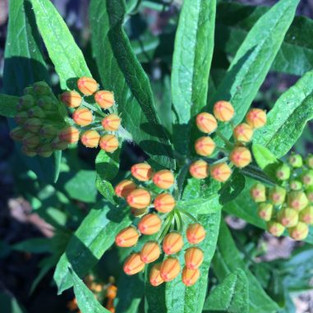
Today’s post is inspired by an incredible Instagram video taken earlier this week by Frau Zinnie, aka Mrs. Zinnia, who blogs about all things gardening from Connecticut.
Thank you Frau Zinnie! The annual migration of Monarch butterflies from parts of Canada and the US east of the Rockies to Mexico to over winter in warmer temperatures is truly stunning. It’s amazing these intricate creatures can make such a journey.
I am no expert in butterflies but I was so taken by this video that I gathered the following information from a couple of expert resources. While most scientists agree the North American Monarch population has declined by 90 percent, they also agree gardeners can make a difference. This is where we come in. Monarch caterpillars only eat one plant: butterfly weed (Asclepias). Without it, the caterpillar won’t survive.
There are about 30 species of native milkweed that Monarch caterpillars consume. To feed the Monarch larva in the Chesapeake watershed, it’s very important to plant the straight species of milkweed native here. Straight species means there has been no hybridizing of the plant. These 10 milkweeds native to the Chesapeake region are what experts say Monarchs need.
butterfly milkweed (Asclepias tuberosa)
clasping milkweed (Asclepias amplexicaulis)
common milkweed (Asclepias syriaca)
green comet milkweed (Asclepias viridiflora)
purple milkweed (Asclepias purpurascens)
red milkweed (Asclepias rubra)
redring milkweed (Asclepias variegata)
swamp milkweed (Asclepias incarnata)
These orange, pink, or white perennials generally need full sun; a few can grow in part shade. In my experience they are best placed in flower beds in between other perennials. I have grown the butterfly milkweed below and swamp milkweed, a mild pink color. They are fairly easy to grow. Butterfly weed is another plant that needs a rebranding. These are not weeds; rather they are colorful perennials.
In the Chesapeake watershed, we also need to provide nectar for migrating Monarchs in the fall. The list of plants Monarchs can get nectar from is far broader than just milkweeds.
Most scientists believe this butterfly migration is 2 million years old. Let’s plant some butterfly weed this year and help them out!
For more info:
Frau Zinnie’s blog!
An informative short article about the monarch migration through the Chesapeake Watershed from the Bay journal.
A fact sheet about Monarchs from the Maryland Department of Natural Resource.
A great overview of Monarch issues and migration.





















Kaiser OTC benefits provide members with discounts on over-the-counter medications, vitamins, and health essentials, promoting better health management and cost-effective wellness solutions.
Obituaries near me help you find recent death notices, providing information about funeral services, memorials, and tributes for loved ones in your area.
is traveluro legit? Many users have had mixed experiences with the platform, so it's important to read reviews and verify deals before booking.